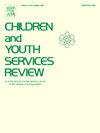Coping patterns among sexually abused children: A latent profile analysis
IF 2.4
2区 社会学
Q1 FAMILY STUDIES
引用次数: 0
Abstract
Background
Studies have identified the use of coping strategies as a key predictor of psychological outcomes in sexually abused children. However, given contradictory results in past studies, the association between approach strategies and the socio-emotional functioning of child victims remains to be clarified. Moreover, the flexible use of approach and avoidance strategies may be a more potent predictor of outcomes rather than considering these strategies separately.
Objective
Using a person-centered approach, this study aimed to 1) discern different patterns of coping strategies among sexually abused children and 2) examine whether these patterns are associated with emotion regulation and behavior problems at Time 1 and Time 2 (six months later).
Participants and setting
A sample of 564 children aged 6 to 12 was recruited in specialized intervention centers following disclosure of sexual abuse.
Methods
Children self-reported their coping strategies mobilized following sexual abuse. Parents completed measures of emotion regulation and behavior problems of children at two time-points.
Results
Three profiles were identified: Low coping (37.77%), High approach and high avoidance (19.86%), and High approach and low avoidance (42.37%). The Low coping profile showed low levels of behavior problems and high emotion regulation. Children assigned to the High approach and high avoidance profile showed more externalized behavior than the two other profiles, and greater levels of emotion dysregulation relative to children assigned to the Low coping profile.
Conclusion
This study highlights the complex nature of coping strategies in sexually abused children, revealing that the interplay between approach and avoidance significantly influences their socio-emotional functioning.
求助全文
约1分钟内获得全文
求助全文
来源期刊

Children and Youth Services Review
Multiple-
CiteScore
6.30
自引率
6.10%
发文量
303
期刊介绍:
Children and Youth Services Review is an interdisciplinary forum for critical scholarship regarding service programs for children and youth. The journal will publish full-length articles, current research and policy notes, and book reviews.
 求助内容:
求助内容: 应助结果提醒方式:
应助结果提醒方式:


